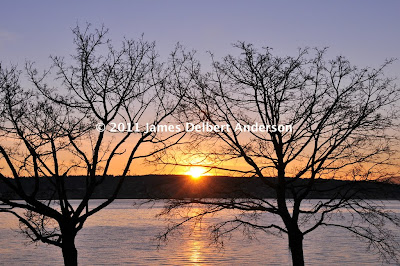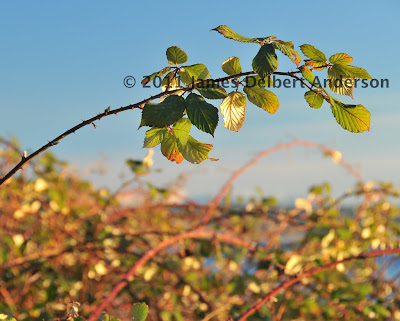Finally some new material! Because let's face it, folks: it's been a crazy winter quarter and, much to my vexation, I haven't had very many opportunities to go out shooting, because of (1) the constant barrage of homework, and (2) frequent cloudiness and rainfall, making photography less worth it given the existence of (1).
Cloudy days certainly are useful, later in the spring or in the fall, and especially in the summer. During the winter, however, I find them pretty disappointing. I can't do very much in open areas because of the whitewashed sky - and more areas qualify as "open" due to the lack of leaves on trees. Forested areas - the cloudy-day highlight of summer - are pretty drab and brown. And more white spots show through because of the bare trees. Finally, there isn't a ton of interesting close-up subject matter.
All that aside, I did get out a few times during winter quarter. First, this from Pacific City, OR, where I went with my housemates over a long weekend (unfortunately for my photography, it was pouring rain for all but about 30 minutes of our stay):
And then a trip to Discovery Park:
The obligatory sunrise trip to Magnuson Park. I don't know what I'd do without this place; it's the early-morning gift that keeps on giving. I took this picture stuck on the side of a hill, barely able to keep my balance. Worth it!


Finally, a trip to Discovery Park this month. Note the different character of the clouds - this was one of the first days this year where the clouds were starting to look like spring clouds. It's hard to describe what exactly that is. I think part of it is the rapid alternation of overcast and sunshine that happens in spring weather. Also I think there tend to be more cumuliform clouds in the spring than in the winter, due to the clash between greater surface-level warming and residual cold temperatures in the upper atmosphere, which encourages convection and thus cumulus-type clouds. I'm not really sure how it all works, but I checked out some cloud books from the library and am trying to learn how the weather around here operates. Anyhow, here are a couple good ones:
I was very fortunate to have this shot. The sun was not out the whole time I was at Discovery. Indeed, it was clouding up as I drove there, and the sun was obscured for the beginning of my visit. I noticed this tree and the clouds behind it, but knew that sunshine would make this picture way more dramatic and cool. When the sun came out, I realized my luck and sprinted over to this tree.
These clouds around the chapel were a lucky little bonus. I almost missed them, but was fortunate enough to turn around at the right time as I was walking away from the chapel and notice them.
Also, spring has sprung in the forest! Some leaves are starting to come out, as you can see in the background of this next one!
I'd better sign off. I think I heard a clap of thunder outside, and want to get off my computer before it zaps me. It's spriiiing!!!

